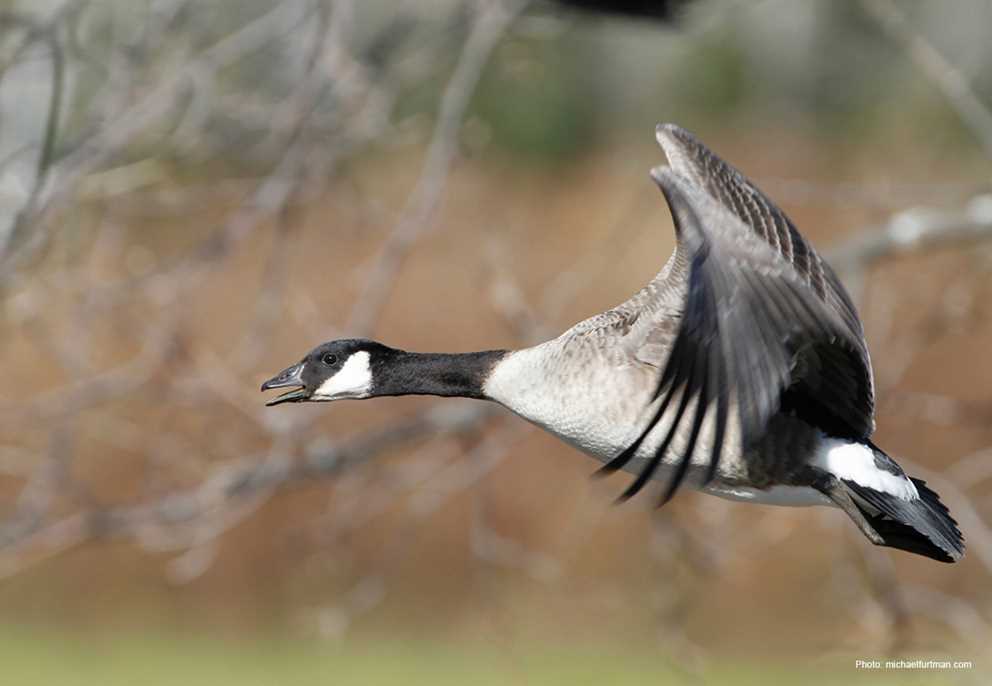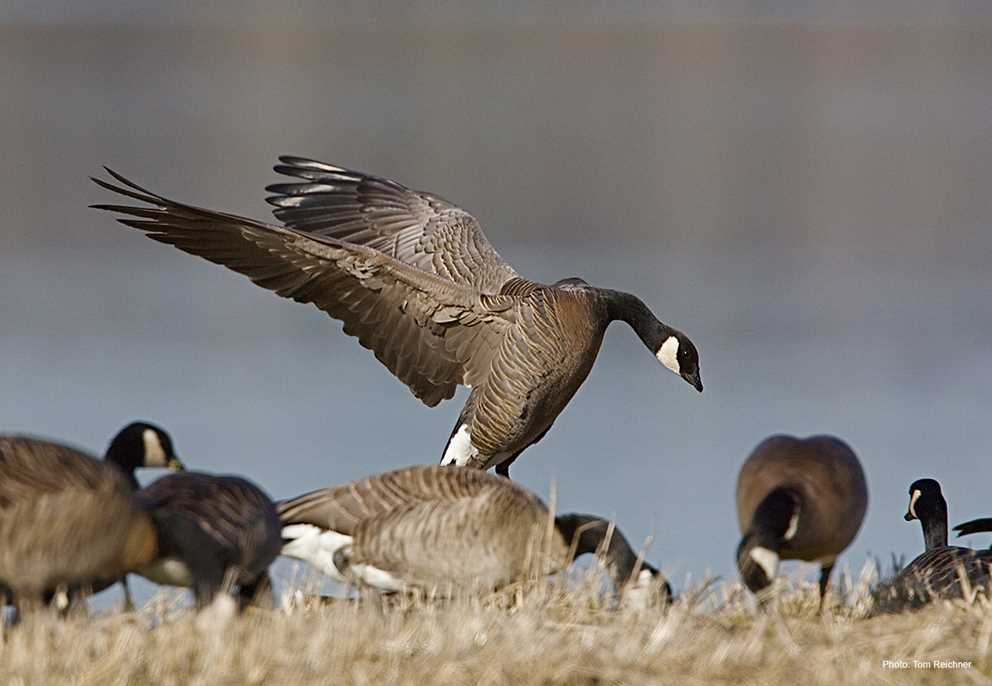Breeding
Cackling geese tend to nest in more northern habitats than Canada geese. Female cackling geese lay 2-8 eggs with an average incubation period of 25-28 days.
Latin: Branta hutchinsii
Average length: M 22-30 inches
Average weight: M 3.4-5.7 lbs., F 2.1-5.3 lbs.
Description
Cackling geese resemble Canada geese in appearance. Male cackling geese are slightly larger than females, with both sexes having long, black necks with white chinstraps. The breast, abdomen and flanks range in coloring from a light gray to a dark chocolate brown, either blending into the black neck or being separated from it by a wide white collar. The back and scapulars are darker brown, the rump is blackish and the tail is blackish-brown with a U-shaped white band on the rump. The bill, legs and feet are black.
Cackling geese are a small-bodied group of four subspecies, consisting of the Aleutian, Cackling, Taverner's and Richardson's geese. Cackling geese have proportionally smaller, stubbier, triangular-shaped bills than their Canada goose counterparts.
Food Habits
Cackling geese are nearly entirely herbivorous, feeding on graminoids like grasses and sedges in the summer during growth periods. In fall and winter, cackling geese seek out foods with higher carbohydrate content, consuming berries, seeds, and agricultural grains.
Population
Down to fewer than 500 birds in the 1970s, the Aleutian cackling goose is a success story in waterfowl management. Population estimates based on observations of neck-banded Aleutian cackling geese during winter 2006-'07 was 118,700, 13 percent greater than the previous year. Estimates for Aleutian cackling geese increased an average of 14 percent per year from 1997-2006. The 2008 fall estimate of cackling geese was 173,400 geese. The estimate for Taverner's cackling geese (a pooled estimate of Taverner's and lesser Canada geese) was 74,400 birds for 2007. The Richardson's goose subspecies is thought to be increasing, with population estimates greater than 680,000 in 2007.
From a harvest management perspective, cackling geese are usually included in season lengths and bag limits with other white-cheeked geese. Hunters should be sure to check specific state regulations for hunting restrictions.
Migration and Wintering
Aleutian, Cackling and Taverner's geese primarily winter west of the continental divide, while Richardson's geese winter mainly in southern Central Flyway states. See the data below for subspecies breeding and wintering distributions of cackling geese:
Aleutian
Breeding: Aleutian Islands
Wintering: Pacific Coast to central California
Cackling
Breeding: Yukon-Kuskokwim Delta of western Alaska
Wintering: Willamette and Lower Columbia River Valleys of Oregon and Washington
Taverner's
Breeding: interior and south-central Alaska
Wintering: Washington, Oregon, California
Richardson's
Breeding: Baffin, Southampton, Victoria, Jenny Lind, and King William Islands, Hudson Bay coast, Queen Maud Gulf, northern Alberta
Wintering: Southeast Colorado; northern New Mexico, Okalahoma, Texas, northeastern Mexico




